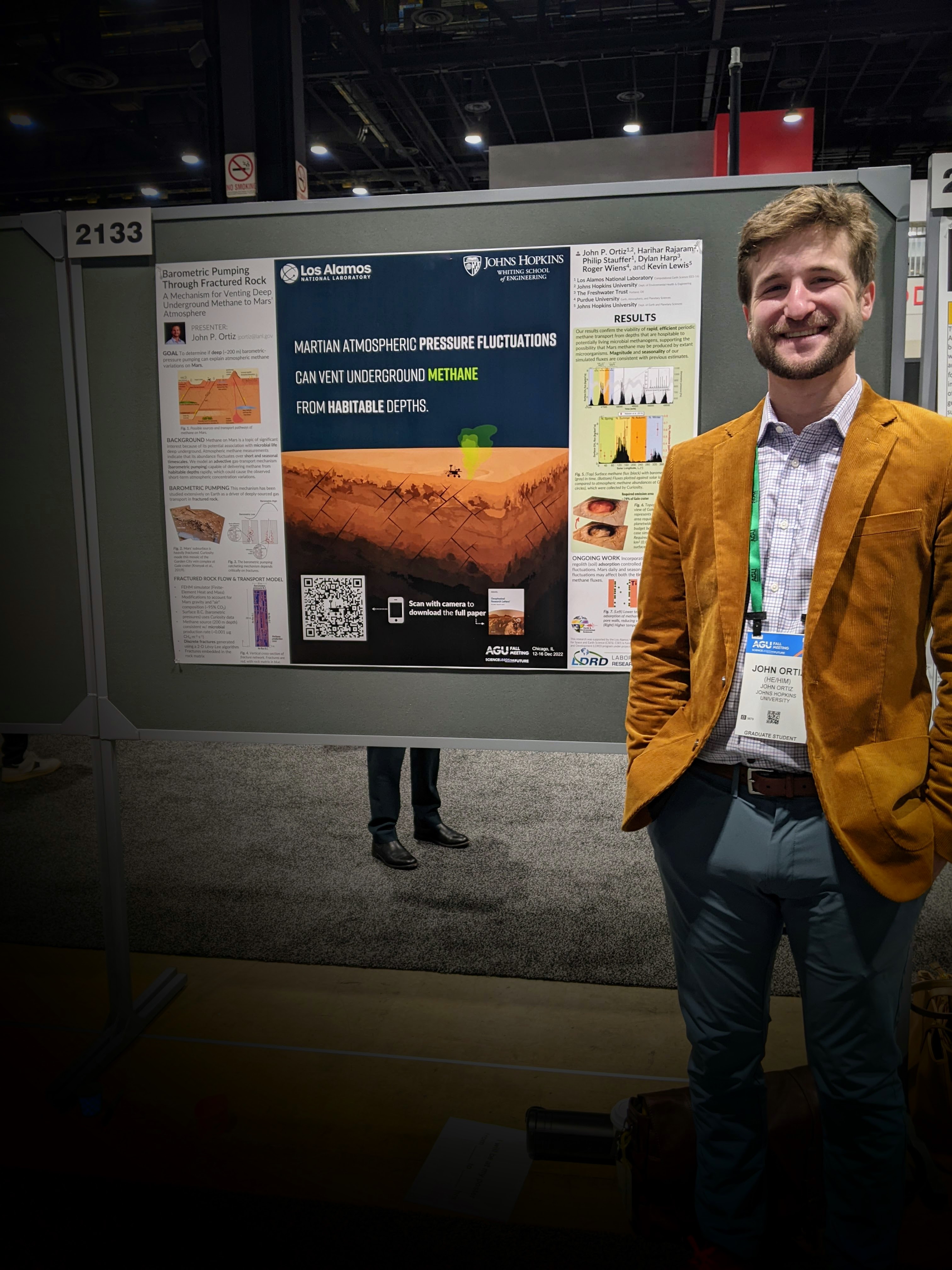Barometric pumping through fractured rock: A mechanism for venting deep underground methane to Mars’ atmosphere
Date:
Chicago, IL
Poster at AGU 2022 Fall Meeting
Session: P22F The New Mars Underground: Nexus of Decadal Planetary Science Objectives II
Abstract:
The existence of methane on Mars is a topic of significant interest because it is a potential biosignature. To date, neither the source of methane on Mars nor the mechanism for transmission from the subsurface to the atmosphere are fully understood. Most previous seepage simulations have invoked relatively shallow subsurface sources to explain observed methane signatures on Mars. We propose that barometric-pressure pumping – a common process on Earth whereby atmospheric fluctuations progressively pull underground gases upward to the surface – through fracture networks could be an effective mechanism for methane transport from the deep subsurface on Mars. Using atmospheric pressure data gathered by Curiosity as input, we simulate methane gas transport from depths of 200 m to the surface. Even with a deep source, our model reproduces the observed seasonality of atmospheric methane observed by Curiosity, and the simulated surface methane fluxes fall within the range of previous estimates derived from atmospheric observations. Because 200 m is the likely minimum hospitable depth for living methanogenic microbes, our fracture network model indirectly reinvigorates the possibility of a microbial source of methane on Mars.

Presenting at AGU!
